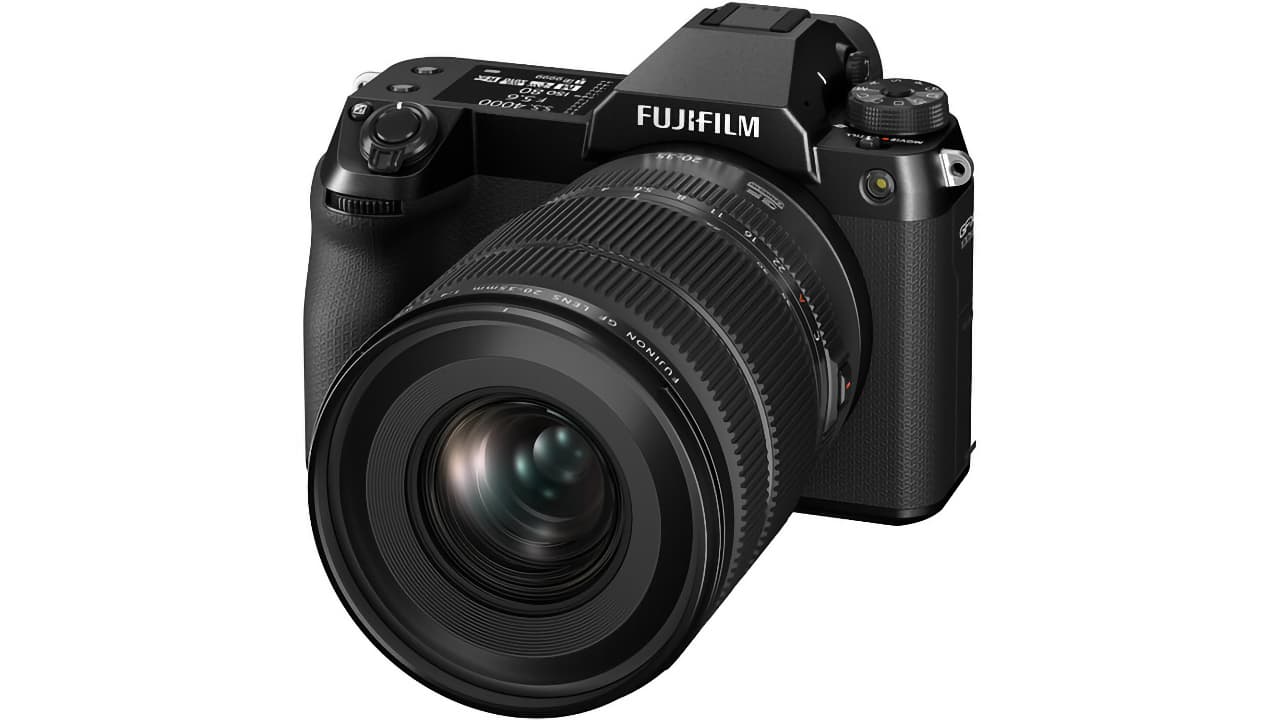
FUJIFILM has unveiled the latest model in its GFX series of mirrorless digital cameras, the FUJIFILM GFX100S II, which offers 102MP in an impressively light and compact form factor.
FUJIFILM has released a fair few things this week at its latest X-Summit in Australia, but undoubtedly the headline is the latest entrant in its GFX series, the new $4999 GFX100S II.
This features a newly-developed GFX 102MP CMOS II high-speed image sensor coupled with the company’s latest high-speed image processing engine, the X-Processor 5. And, perhaps more pertinently, it houses all this within a compact body weighing only 1.95lb (883g). This, FUJIFILM says, makes it the lightest among the 102MP large-format GFX series cameras. The camera is also equipped with a powerful image stabilizer and a high-speed, high-precision autofocus function.
We’ll have a look at all that below, but first a look at its video capabilities.
4K/30P video recording
The GFX100S II can record 4K/30P 4:2:2 10-bit to an SD card inside the camera. Additionally, Apple ProRes9 recording is possible by connecting an external SSD via USB Type-C.
It is equipped with 13+stop F-log2 for richly graded video and improved flexibility in post. Different video formats can be recorded and output on recording media and HDMI output. Fuji give the example of being able to record in F-log2 on recording media while checking video using ‘film simulation’ on an external monitor.
ISO 100 can be used as the standard sensitivity thanks to the improved number of saturated electrons in the newly developed sensor. This enables wide dynamic range and low noise shooting. The camera features a tracking AF function during video recording; when using AF-C+Wide/Tracking AF, users can easily specify the subject to be tracked by touching the screen, even in situations involving multiple subjects.
And, as expected following decent demos, it’s compatible with the Frame.io Camera to Cloud service.
102MP large-format sensor

As mentioned above, the improved pixel structure of the GFX 102MP CMOS II has increased the number of saturated electrons in the new sensor, allowing ISO 80 to be used as the normal sensitivity for stills. When set to ISO 80, the camera can shoot with an even wider dynamic range and lower noise than previous models.
An improved microlens of the new sensor improves the efficiency of light utilization at the edge of the sensor. Image quality and AF accuracy at the periphery of the lens have been improved compared to previous models.
The camera features the Pixel Shift Multi-Shot function, which enables 4x resolution and faithful color reproduction. This controls the IBIS mechanism at the advanced level to shift the image sensor by 0.5 pixels at a time and shoot 16 RAW images in a quick succession. The Pixel Shift Combiner software can then be used to combine the 16 RAW files to generate a 400MP image. In addition, by changing the control method within the camera body and combining four RAW files shot by shifting one pixel at a time, an image of approximately 100 million pixels can be generated (in the case of the "Real Color" method).
A total of 20 types of Film Simulations are available, including REALA ACE which offers faithful color reproduction and high-contrast tonality. Users can choose from 20 Film Simulation modes to give images a diverse range of distinctive tones.
Continuous shooting at a maximum speed of 7.0 frames per second is possible thanks to the improved readout speed of the sensor combined with a newly developed shutter drive that ensures users never miss a moment worth capturing.
IBIS and AF
The camera’s In-Body Image Stabilization combines a gyro sensor and an acceleration sensor and uses image information to detect blurring, thereby improving the accuracy of its correction. This enables the camera to achieve 5-axis and up to 8.0-stop anti-shake performance, which is an evolution over and above previous models.
In addition to the now ubiquitous face and eye AF that has evolved through improved algorithms, the camera is equipped with subject detection AF by AI developed using deep learning technology. It detects animals, birds, cars, motorcycles, bicycles, airplanes, trains, and even insects (basically small birds) and drones (basically small aeroplanes). The camera also incorporates an AF prediction algorithm, surpassing previous models’ motion tracking abilities and enabling superior performance in fast-moving scenes.

And it is equipped with a 5.76-million dot high-resolution EVF with a high magnification ratio of 0.84x. The EVF suppresses image drift and distortion caused by misalignment of the pupil to achieve high visibility when using the viewfinder.
Ergonomics
While incorporating new features, the body maintains the same compact dimensions as its predecessor, measuring approximately 150mm in width, 104mm in height, and 87mm in depth (that is 5.91in, 4.09in, 3.43in). As already mentioned, the new model is also lighter than its predecessor, weighing approximately 883g (1.95lb), making it the lightest model in the GFX series with a 102MP large-format sensor.
As with the flagship FUJIFILM GFX100 II, the new model also features the BISHAMON-TEX texture that enhances grip at various angles when holding the camera.
Price is $4999 and it will ship in mid-June.
Tags: Production Cameras Fujifilm mirrorless


Comments